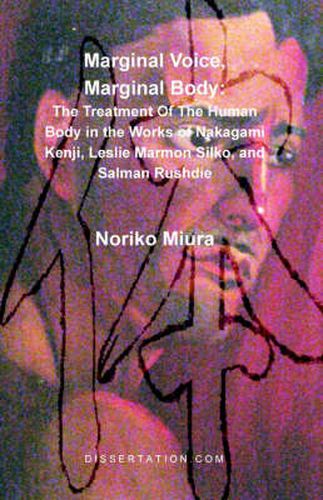Readings Newsletter
Become a Readings Member to make your shopping experience even easier.
Sign in or sign up for free!
You’re not far away from qualifying for FREE standard shipping within Australia
You’ve qualified for FREE standard shipping within Australia
The cart is loading…






This title is printed to order. This book may have been self-published. If so, we cannot guarantee the quality of the content. In the main most books will have gone through the editing process however some may not. We therefore suggest that you be aware of this before ordering this book. If in doubt check either the author or publisher’s details as we are unable to accept any returns unless they are faulty. Please contact us if you have any questions.
In examining the work of three ethnic writers (Nakagami Kenji is Japanese burakumin, Leslie Marmon Silko Native American, Salman Rushdie an Indian living in England), this project studies the literary depictions of the ways in which the body is portrayed and used as a space for cultural and ideological inscription. The major issues addressed involve gender, race, and ethnicity as forces which become visible through the socially constructed body.
In the works of Nakagami Kenji, Salman Rushdie, and Leslie Marmon Silko, bodies cry out the silence to overwhelm the torturer. They all share a concern with the loss of land which induces migration, a weakened sense of identity, and hybridity. Each author uses the body of his/her protagonist as the site to inscribe the consequences of such loss, along with the criticisms against the dominant system and ideology of society. In each case, an emerging discourse of the body forges the power of the margins to resist and subvert any claims of hegemonic control.
The section on Kenji’s novel Wings of the Sun includes an investigation of the burakumin, its historical and cultural origin, and how it is excluded from the structure of Japanese society, before moving to an examination of Kenji’s texts create a space for the burakumin within the Body Without Organs of advanced capitalism. The chapter on Rushdie’s Shame shows how the novel uses the bodies of its protagonists as allegories of the violence and conflict within multi-ethnic, post-colonial Pakistan. The analysis of Silko’s Ceremony involves the conflict between Native-American and Euro-American cultures in their varying treatments of the body.
Much has been written in the last decade about literary representations of the body. This work has stressed that the body is a conceptual category produced by specific discursive operations that can be analyzed and described. Emphasis on the discursive construction of the body facilitates our understanding of the human condition represented in literature or in other cultural products, and in the case of these three authors posits the body as the site of alternative logics for dealing with the realities of post-colonial situations.
$9.00 standard shipping within Australia
FREE standard shipping within Australia for orders over $100.00
Express & International shipping calculated at checkout
This title is printed to order. This book may have been self-published. If so, we cannot guarantee the quality of the content. In the main most books will have gone through the editing process however some may not. We therefore suggest that you be aware of this before ordering this book. If in doubt check either the author or publisher’s details as we are unable to accept any returns unless they are faulty. Please contact us if you have any questions.
In examining the work of three ethnic writers (Nakagami Kenji is Japanese burakumin, Leslie Marmon Silko Native American, Salman Rushdie an Indian living in England), this project studies the literary depictions of the ways in which the body is portrayed and used as a space for cultural and ideological inscription. The major issues addressed involve gender, race, and ethnicity as forces which become visible through the socially constructed body.
In the works of Nakagami Kenji, Salman Rushdie, and Leslie Marmon Silko, bodies cry out the silence to overwhelm the torturer. They all share a concern with the loss of land which induces migration, a weakened sense of identity, and hybridity. Each author uses the body of his/her protagonist as the site to inscribe the consequences of such loss, along with the criticisms against the dominant system and ideology of society. In each case, an emerging discourse of the body forges the power of the margins to resist and subvert any claims of hegemonic control.
The section on Kenji’s novel Wings of the Sun includes an investigation of the burakumin, its historical and cultural origin, and how it is excluded from the structure of Japanese society, before moving to an examination of Kenji’s texts create a space for the burakumin within the Body Without Organs of advanced capitalism. The chapter on Rushdie’s Shame shows how the novel uses the bodies of its protagonists as allegories of the violence and conflict within multi-ethnic, post-colonial Pakistan. The analysis of Silko’s Ceremony involves the conflict between Native-American and Euro-American cultures in their varying treatments of the body.
Much has been written in the last decade about literary representations of the body. This work has stressed that the body is a conceptual category produced by specific discursive operations that can be analyzed and described. Emphasis on the discursive construction of the body facilitates our understanding of the human condition represented in literature or in other cultural products, and in the case of these three authors posits the body as the site of alternative logics for dealing with the realities of post-colonial situations.